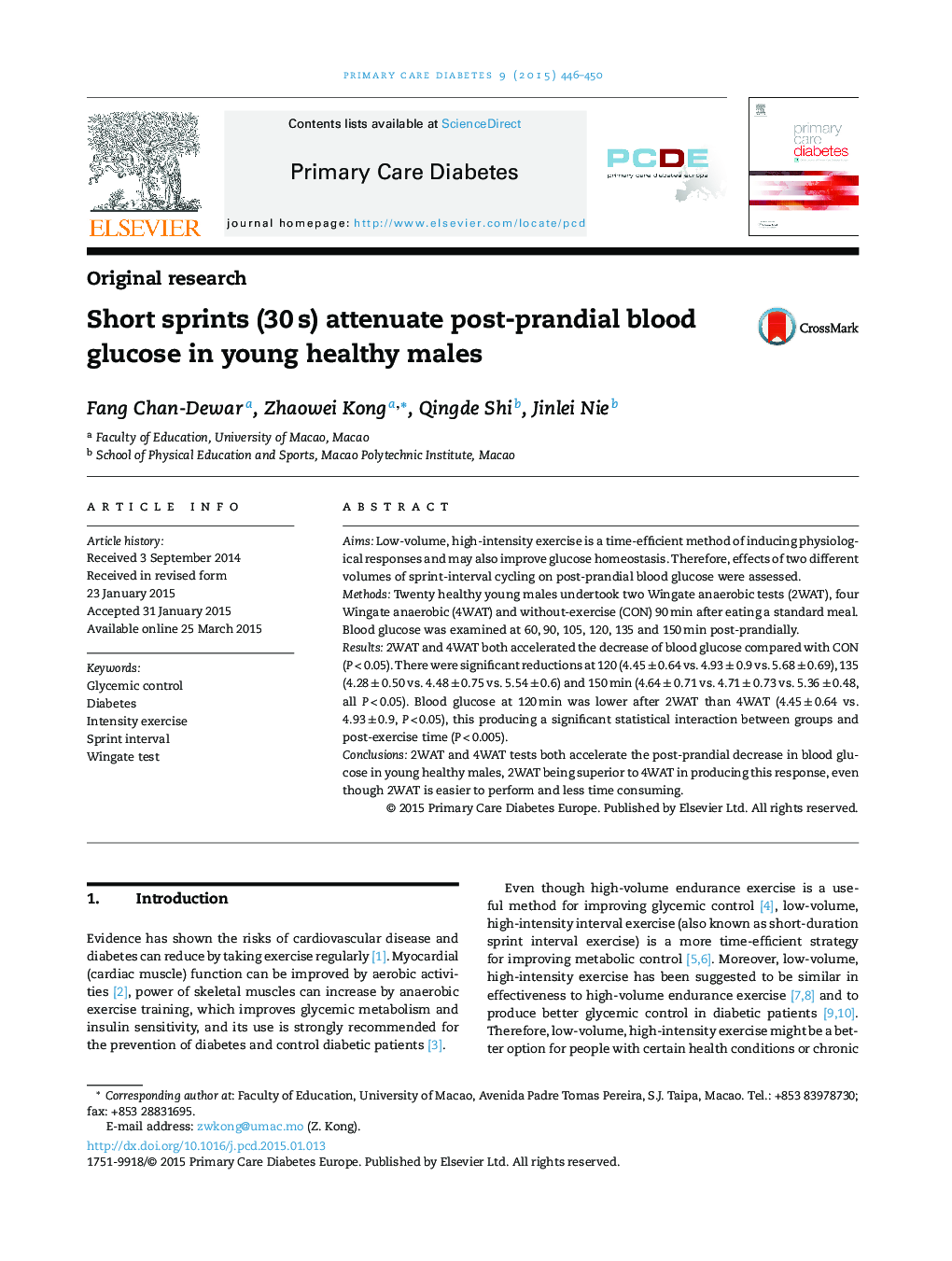| کد مقاله | کد نشریه | سال انتشار | مقاله انگلیسی | نسخه تمام متن |
|---|---|---|---|---|
| 2675433 | 1141788 | 2015 | 5 صفحه PDF | دانلود رایگان |
• Sprint interval exercise is an effective method to improve glucose clearance from the blood after a meal.
• The effect is superior in low-volume, high-intensity (2WAT) compared with high-volume, high-intensity (4WAT) exercise.
• These findings highlight the potential for less time-consuming high-intensity exercise to improve glycemic control.
AimsLow-volume, high-intensity exercise is a time-efficient method of inducing physiological responses and may also improve glucose homeostasis. Therefore, effects of two different volumes of sprint-interval cycling on post-prandial blood glucose were assessed.MethodsTwenty healthy young males undertook two Wingate anaerobic tests (2WAT), four Wingate anaerobic (4WAT) and without-exercise (CON) 90 min after eating a standard meal. Blood glucose was examined at 60, 90, 105, 120, 135 and 150 min post-prandially.Results2WAT and 4WAT both accelerated the decrease of blood glucose compared with CON (P < 0.05). There were significant reductions at 120 (4.45 ± 0.64 vs. 4.93 ± 0.9 vs. 5.68 ± 0.69), 135 (4.28 ± 0.50 vs. 4.48 ± 0.75 vs. 5.54 ± 0.6) and 150 min (4.64 ± 0.71 vs. 4.71 ± 0.73 vs. 5.36 ± 0.48, all P < 0.05). Blood glucose at 120 min was lower after 2WAT than 4WAT (4.45 ± 0.64 vs. 4.93 ± 0.9, P < 0.05), this producing a significant statistical interaction between groups and post-exercise time (P < 0.005).Conclusions2WAT and 4WAT tests both accelerate the post-prandial decrease in blood glucose in young healthy males, 2WAT being superior to 4WAT in producing this response, even though 2WAT is easier to perform and less time consuming.
Journal: Primary Care Diabetes - Volume 9, Issue 6, December 2015, Pages 446–450
